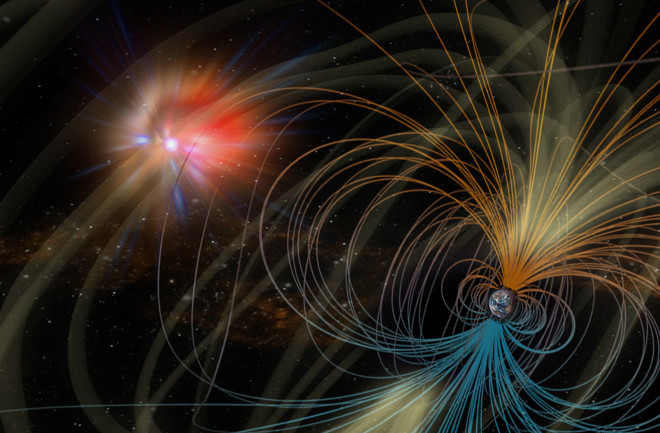The magnetic field shields Earth from cosmic radiation and the solar wind that the Sun pelts the planet with. In a new study, researchers found our current magnetic field could be the same to what it was 3.7 billion years ago.
The findings published in the Journal of Geophysical Research are scientists' oldest estimates of Earth's magnetic field strength. It was found using rocks dating 3.7 billion years old.
"This is a really important step forward as we try and determine the role of the ancient magnetic field when life on Earth was first emerging,” said Claire Nichols, study first-author and geologist at the University of Oxford, in a press release.
Evidence of an Ancient Magnetic Field
Through a meticulous process using rocks excavated from Isula, Greenland, the researchers could determine that the magnetic field's strength 3.7 billion years ago was 15 microTesla – half of our modern magnetic field strength.
This feat was achieved by studying the iron particles in the ancient rocks, which acted as natural magnets, recording the magnetic field strength and direction.
"Extracting reliable records from rocks this old is extremely challenging, and it was really exciting to see primary magnetic signals begin to emerge when we analyzed these samples in the lab," said Nichols in a release.
The reason why finding rocks that show the age of Earth's magnetic field overall is difficult is because heat, found along tectonic plates in the planet's crust, can alter any preserved evidence. However, the rocks found in Greenland were on a thick continental crust that protected it from heating.
Read More: Earth's Magnetic Field: Old or Very, Very Old?
Is a Magnetic Field Needed to Support Life?
Since the magnetic field has remained similar in the last billions of years, researchers can infer that Earth's protection against solar wind has increased over time.
Scientists suspect this because, in the past, solar wind used to be fiercer. As the magnetic field further protected the planet from solar wind, it might have allowed life to emerge from the cover of the oceans to land.
The team plans to excavate ancient rocks from Canada, Australia, and South Africa for future studies. More evidence of the magnetic field's age and how it might have evolved may help scientists fully understand if a magnetic field is needed to support life.
Read More: When North Goes South: Is Earth's Magnetic Field Flipping?
Article Sources
Our writers at Discovermagazine.com use peer-reviewed studies and high-quality sources for our articles, and our editors review for scientific accuracy and editorial standards. Review the sources used below for this article:
Journal of Geophysical Research. Possible Eoarchean records of the geomagnetic field preserved in the Isua Supracrustal Belt, southern west Greenland.
Elizabeth Gamillo is a staff writer for Discover and Astronomy. She has written for Science magazine as their 2018 AAAS Diverse Voices in Science Journalism Intern and was a daily contributor for Smithsonian. She is a graduate student in MIT's Graduate Program in Science Writing.

